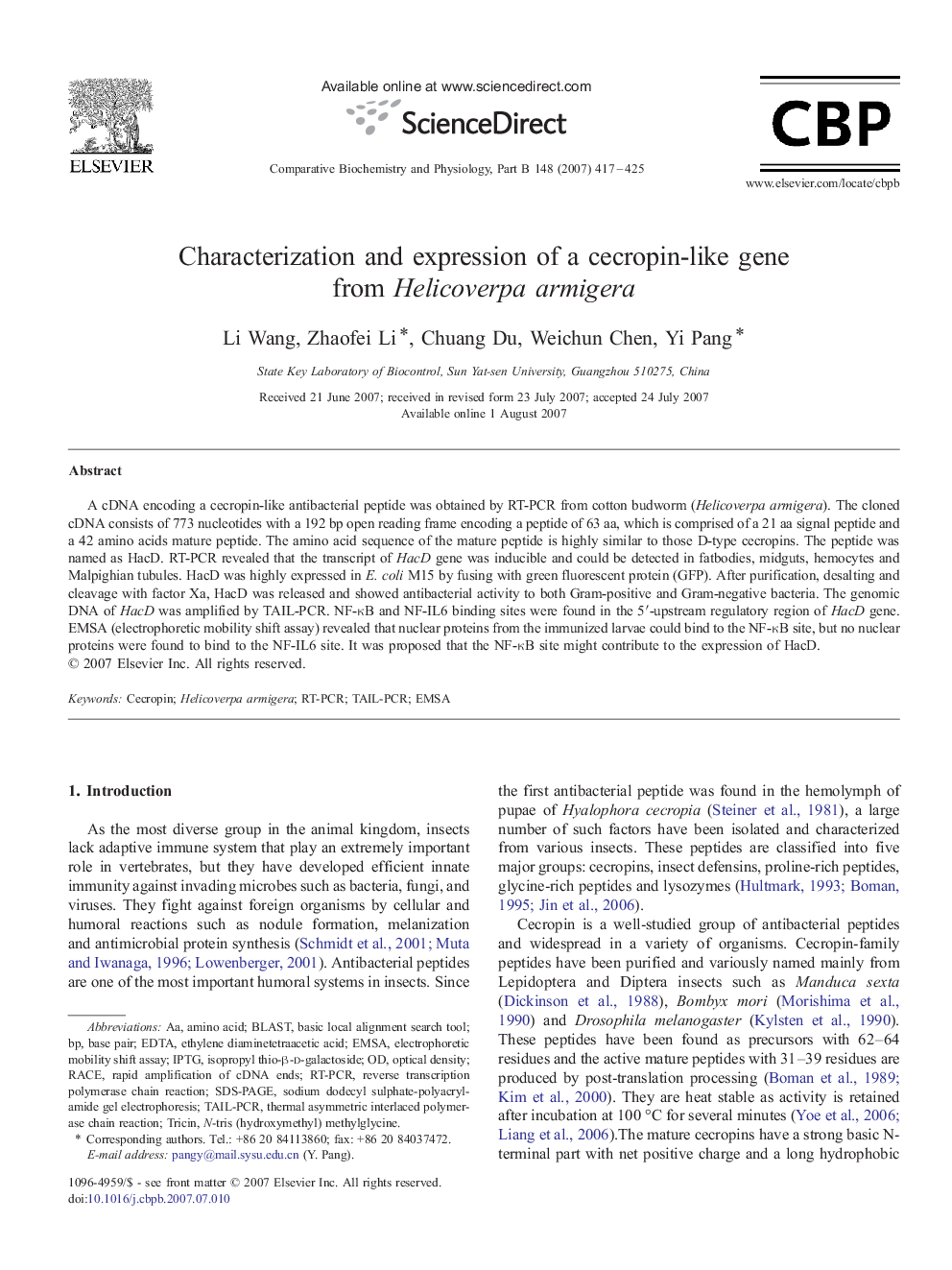| Article ID | Journal | Published Year | Pages | File Type |
|---|---|---|---|---|
| 1976532 | Comparative Biochemistry and Physiology Part B: Biochemistry and Molecular Biology | 2007 | 9 Pages |
A cDNA encoding a cecropin-like antibacterial peptide was obtained by RT-PCR from cotton budworm (Helicoverpa armigera). The cloned cDNA consists of 773 nucleotides with a 192 bp open reading frame encoding a peptide of 63 aa, which is comprised of a 21 aa signal peptide and a 42 amino acids mature peptide. The amino acid sequence of the mature peptide is highly similar to those D-type cecropins. The peptide was named as HacD. RT-PCR revealed that the transcript of HacD gene was inducible and could be detected in fatbodies, midguts, hemocytes and Malpighian tubules. HacD was highly expressed in E. coli M15 by fusing with green fluorescent protein (GFP). After purification, desalting and cleavage with factor Xa, HacD was released and showed antibacterial activity to both Gram-positive and Gram-negative bacteria. The genomic DNA of HacD was amplified by TAIL-PCR. NF-κB and NF-IL6 binding sites were found in the 5′-upstream regulatory region of HacD gene. EMSA (electrophoretic mobility shift assay) revealed that nuclear proteins from the immunized larvae could bind to the NF-κB site, but no nuclear proteins were found to bind to the NF-IL6 site. It was proposed that the NF-κB site might contribute to the expression of HacD.
